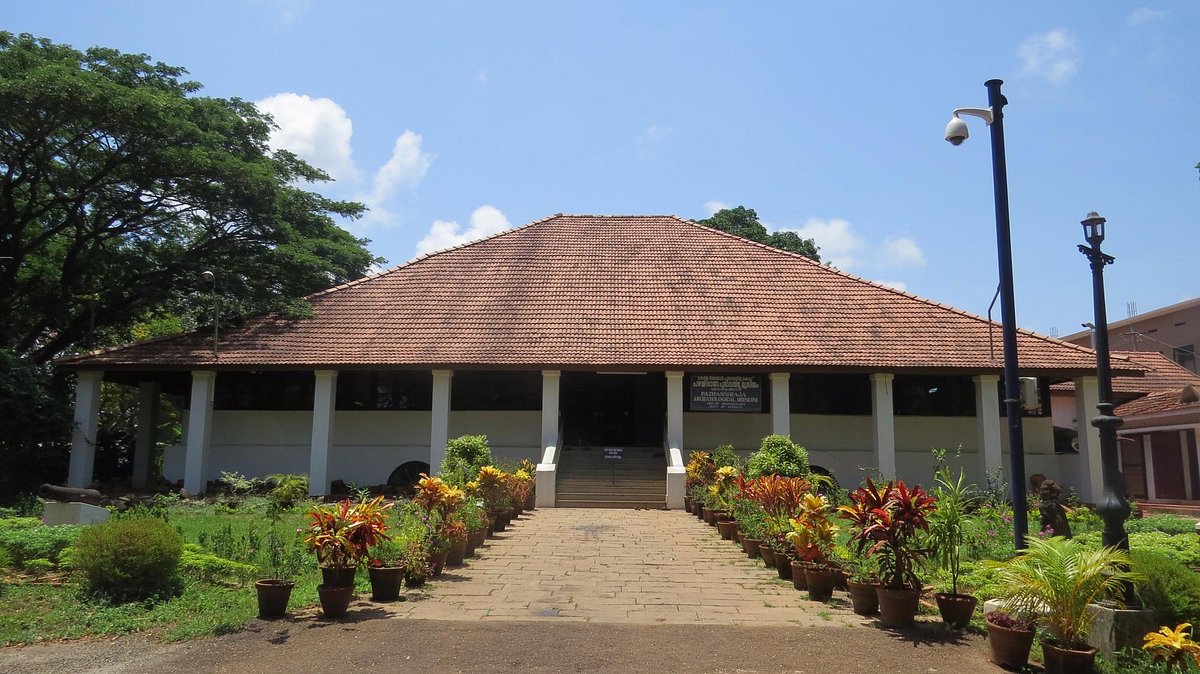Veera Kerala Varma Pazhassi Raja was one of the earliest heroes who fought against the British aliens. he attained martyrdom at the bank of mavilamthodu - pulpally (Wayanad district, Kerala) on November 30 1505. The British sub-collector T.H Baber ordered soldiers to carry the martyr’s body on his palanquin and brought to mananthavady and buried it with all military honour. Now he was laid to rest here. The great pazhassi museum is located on a small hillock near the district hospital near the city of mananthavady. This is the place where the heroic king pazhassi was buried. He was buried by the British with official honours. The British had planted a tree at the place where king pazhassi was buried. Now there is no tree. The monument is located inside the pazhassi museum. Wayanad was first ruled by Dalit kings. By the end of the thirteenth century, it came under the rule of the Kottayam dynasty. So pazhassi got the governance of Wayanad. But during the rule of Wayanad, Tipu sultan tried to capture many parts of the Wayanad and pazhassi joined hands with the Britishers to fight against Tipu (Mysore king). But pazhassi soon realized that Tipu was not the real enemy and the Britishers were the enemy. Later pazhassi joined Tipu and fought with the British company. But the Britishers conquered Tipu and realized that they could subdue the less armoured pazhassi as soon as possible. But suddenly Britishers declared war on pazhassi and pazhassi withdraw from important places and migrate to the Wayanad forests. After that pazhassi came up with the strategy of gorilla warfare and mobilized the community Kurichya and other kings for it. To put an end to this, the British company appointed T.S Babar as their new sub-collector. Pazhassi Raja was betrayed and captured by Babur. And so, pazhassi was martyred on November 30, 1805. Thus, the place where pazhassi died is now situated as the pazhassi museum. This is the beginning of the history of pazhassi and the mavilamthodu. When we are entering the pazhassi museum, we can see the remains of it. Upon entering the pazhassi museum, we can see a spacious garden. There are lots of plants and a playground for children to play on. We can also experience the pazhassi raja memorial library and research centre there. Pazhassi’s picture and history can be seen in the form of posters prepared for the viewers. Through this, we can understand the war between pazhassi and the British company and the way of life of pazhassi at that time. The museum also tells the story of brave warriors like Talakkal Chandu, Kaiteri Ambu, Idacheni Kunkan who left their mark on pazhassi. The pazhassi Raja Museum has four galleries. Pazhassi gallery, Tribal gallery, heritage gallery and coin gallery. The Adivasi gallery is distinguished by the unique art forms of the Adivasis. This gallery depicts the lifestyle and culture of that time. The model of the tribal huts of that time is also prepared here. The introductory gallery is built in a way that is helpful to research students. However, it is also of great interest to the general public. The main attraction of the museum is the copies of various orders and correspondence issued by the British to suppress the pazhassi riots, as well as ancient weapons, marbles, tolls related to ancient tribal culture, jungle tools, and weapons and rare coins.









Comment (0)